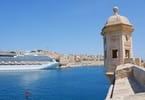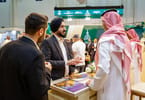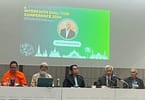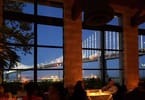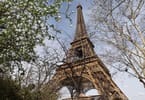“Honestly speaking, the term ‘smart city’ is way overused; no one can pinpoint what it means,” said data scientist Dr. Lau Cher Han during the panel discussion in July’s Tech in Asia Kuala Lumpur City Chapter gathering.
I first went to Kuala Lumpur in the early nineties, before the Twin Towers were built. Coming directly from Hong Kong, the city seemed like a quiet country town or a small provincial capital.
There were many small streets with food stalls and Jalan Alor was not a happening place. It was directly behind the Regent Hotel where I sojourned. Bukit Bintang (now a thriving and overly built-up area of restaurants and malls interspersed with hotels) was a quaint backwater, and the only noise was that of motorbikes, taxis, and food hawkers.
I returned in 2007 to find a thriving, Asian metropolis hardly recognizable from my first visit, The Twin Towers were up, and a new airport was operational 80 kilometers from the city, yet the city still had a magical “green” quality to it. Highways were carved out of jungles, and the jungle dominated. Green was everywhere, and in many instances, I had monkeys visiting on the doorsteps to my apartment in downtown KL.
My latest visit to Kuala Lumpur was this year and boy had all this changed. Now the highways dominated and threatened the jungle on every corner. New buildings, mostly skyscrapers, were everywhere, each vying to be taller than the last.
Now the word green, no longer referred to the jungle, but came from within. With the push to sustainability coming from a grassroots level.
With a population expected to reach 10 million by 2020, Kuala Lumpur is in need of major urban planning to enhance the well-being of locals and tourists alike. To allow for its sustainable development, various projects are being implemented which will impact community livability, and economic and business sustainability.
In need of a “green” place to stay and at the same time limit my carbon footprint, I checked out a website called Culture Trip, which lists Element Hotel as number one on their list. Curious to know more, I contacted the hotel and spoke to my old friend Doris Chin, whom I had known from a past stay at Frasers apartments, and by sheer coincidence, she is now general manager at Element. She convinced me to stay my first two nights in Kuala Lumpur at Element.
With a Green Building Index certification and a stone’s throw from the city center, the hotel uses environmentally-friendly ways in its approach to luxury and comfort. According to Ms. Chin, the hotel has broken with the tradition of eco-friendly stays in remote settings. The Element is located in the heart of the capital and is close to the iconic Petronas Twin Towers.
The hotel is in a spectacular setting within the 275-meter high Ilham Tower and designed by globally-acclaimed architects Foster+Partners. Along with being one of the tallest hotels in the city, the Element is designed to be green from the ground up. Built using sustainable construction materials, the hotel has received its Green Building Index certification and is equipped with a rainwater harvesting system, 100% non-PVC flooring, energy-efficient LED lighting, and an indoor air quality CO2 monitor.
Naturally, there are other environmentally-friendly hotels (although not so many in Kuala Lumpur), and Culture Trip does also cite the G Tower Hotel for its approach to sustainability, however, most are located in the kampongs or countryside, such as the Dusuntara Jungle Resort or The Awanmulan in Negri Sembilan just outside Kuala Lumpur.
KL, as it is known to the locals, has a long way to go in its drive to be green and is playing catch up to Singapore, which has a congestion charge in place, limiting cars coming into the city center. Perhaps, limiting cars in downtown KL would be the next step to decrease pollution and drive people to take its expending Rapid Transit systems.
How far has Kuala Lumpur city progressed when it comes to creating a sustainably-built environment? Not too bad, it seems.
World Green Building Council chairperson Tai Lee Siang believes KL’s green building standards are moving towards the levels of first-tier Asian cities.
Describing KL as unique in its push towards a greener built environment, he said: “Every city and country has its own unique approach. For KL, its strength is its strong ground-up enterprises that are capable of developing massive green and sustainable township projects.” It is very different from Singapore, which has extreme top-down control [by the government] to turn the whole place into a singular model.
I am looking forward to my next visit. Maybe in 2019, I will see an even greener KL.




